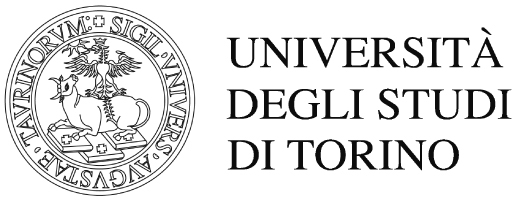Universities


Coordinator - University of Turin (UNITO) Italy
Neuroscience Institute of Turin
NIT is the Interdepartmental centre of the University of Torino which gathers most neuroscientist working in the Turin area. NIT aims to i) Promote and carry out experimental, theoretical and applied research in the field of neuroscience, the study of the cellular and molecular basis of the nervous system and the analysis of high integrative functions of mental activity in normal and pathological conditions; ii) Promote and develop training activities and provide a superior Neuroscience Graduate School of address; iii) Encourage the creation of new research groups and the inclusion of new researchers in the scientific community in Turin; iv) Promote the integration of academic research with the territory and its close interaction with industrial research.
NIT is organised in: a) Clinical area, in the strict sense of neuropsychiatric field (Neurology , Psychiatry, Neurosurgery, Neuroradiology, Clinical Neuropharmacology, Clinical Psychology), led directly to the wards, in clinics or in ad hoc structures scattered throughout the territory. b) Area of integrated systems. This area includes all research in neuroscience to study directly integrated systems, with particular reference to the nervous system and mental processes of man in normal and pathological conditions (research in Neurology, Psychiatry, Neurosurgery, Neuroradiology, Systems Physiology, Psychology and Neuropsychology, Cognitive Science, Artificial Intelligence and Neural Networks, Ethology and Behavioral Sciences. c) Neurobiological area, including basic research and applied research field of cellular and molecular level. Also included in this area Biophysics, Neurobiology, Cellular and Molecular Neurophysiology, Neuroanatomy, cellular and molecular Neuropathology and Neuropharmacology and all research conducted on experimental models and directed to develop and test procedures designed molecules or diagnostic or therapeutic application. To the NIT belongs the CNI (Centro di NeuroImmagine – Brain Imaging Centre), which recently acquired a 3T MRI machine.
The Neurologic Clinic of the UNITO is dealing with AD, frontotemporal disease and dementia patients, and is responsible for UVA (Unità Valutativa Alzheimer - Alzheimer Evaluation Unit). The diagnosis of MCI is very strict and subjects are currently evaluated as in-patients according a protocol which involves several invasive techniques such as CSF analysis, PET and MRI scans.
Within the Memory Clinic, a group of psychologist is working on the construction of new indices of frailty. The concept of frailty denotes a loss of biological reserves in terms of energy, physical, cognitive and health status. This puts people with frailty and with neurodegenerative diseases with a high risk of negative outcomes. Through this theme will demonstrate how the measurement of fragility is important for early diagnosis, for cognitive impairment and loss of autonomy in daily life and prognosis. The GDR is formed by researchers in the psychological and neuropsychological assessment of the elderly.

German Sport University Cologne (DSHS) Germany
The German Sport University Cologne (Deutsche Sporthochschule Köln (DSHS)) is Germany’s largest and most prestigious centre of teaching and research in physical education, human movement science, and sport science. With 19 scientific institutes (departments), it covers a wide range of sport scientific disciplines. Within Europe, DSHS is one of the biggest and most important scientific institutions focusing on exercise, sports and human movement.
The Institute of Movement and Sport Gerontology is one of the 19 DSHS institutes and covers a broad field of basic and applied movement sciences on ageing. Its educational and research activities are dedicated to furthering knowledge about changes in movement behaviour in relation to ageing. The Institute’s expertise covers a broad range of basic and applied movement sciences in relation to ageing. The expertise comprises neuro-mechanical determinants of changes in motor functioning with ageing, cognitive changes with ageing, as well as the development, implementation, and evaluation of innovative interventions to improve cognitive and motor functioning in different groups of older people in various settings (e.g. community-dwelling people, demented persons, care residents). The design and development of diagnostic methods and innovative interventions integrate the basic and applied research of the Institute. Methodologic expertise of the Institute also comprises the development of innovative body-fixed-sensor-based approaches to objectively assess and support daily life functioning in different groups of older patients and older people.
Several projects of the Institute of Movement and Sport Gerontology have addressed cognitive and motor functioning in specific groups of older people. In recent years, Fit for 100 (FF100) was developed as a training program which aims to improve people’s activities of daily living fall prevention and prevent falls by coordinative and strengthening exercises. FF100 has been successfully implemented in more than 50 institutions in NorthRhine-Westphalia and beyond. NADIA, a similar exercise approach as FF100 is offered to dementia patients and their partners and relatives. Another related project is MoCog, an intervention study which focused on improving motor and cognitive performance of older adults with and without Alzheimer’s disease by increasing physical activity levels. The Institute of Movement and Sport Gerontology was crucial partner in recent EU projects focusing on health and functioning in older people t risk of falls (i.e. iStoppFalls and FARSEEING), and is currently involved in several (inter)national research cooperations focusing on health and functioning in older people.

Loughborough University (LBORO) United Kingdom
National Centre for Sport and Exercise Medicine (NCSEM)
The NCSEM East Midlands is a collaboration across disciplines and institutions to provide an international centre of excellence for injury rehabilitation and to transform the way in which physical activity and exercise are used in the prevention, treatment and management of long term conditions. By co-locating and combining the research, clinical services and education capabilities of three Universities, two Hospital Trusts and a Healthcare Trust in a truly outstanding research environment, the NCSEM-EM will transform research, clinical services and education in five key areas:
-Physical Activity in Disease Prevention
-Exercise in Chronic Disease
-Sports Injuries and Musculoskeletal Health
-Mental Health and Wellbeing
-Performance Health
These themes have been chosen to reflect and build on the expertise and potential for collaboration of academics, clinicians and allied health care professionals across the region. Thus creating the capability to deliver basic and applied health research and expedite translation of this research into health benefits through dissemination of knowledge and improved service delivery.
The collaboration of three partners in the East Midlands, Sheffield and London will integrate research, education and clinical services to accelerate the translation of scientific research into new models of patient care.

Universität Siegen (USI) Germany
The Research Group “Information Systems and New Media” at the University of Siegen investigates the development, introduction, and appropriation processes of cooperation and media systems. This class of applications supports the interaction among human actors with social systems. Designing these applications gains increasing economic and social importance since they provide a technological base for social networks among individuals, organisations, and (non-) governmental institutions. Examples of cooperation and media systems are: communication and cooperation systems, community systems and learning platforms, interactive TV, indoor and outdoor position tracking technologies, cooperative games and digital arts. The research group is internationally well known in the areas of Human Computer Interaction (HCI), Computer-Supported Cooperative Work (CSCW), community research, interactive TV research, and for empirical studies in applied Computer Science and Information Systems. The research focuses on user-centred, practice-oriented IT media design and participatory action research. In terms of complementarities of expertise the research group brings in broad experience and knowledge of designing community-centred interactive TV formats and practice- and user-centred research methodologies (inter alia, the living lab approach).
The Research Group for Pattern Recognition was founded by Marcin Grzegorzek in 2010. The group is part of the Institute for Vision and Graphics in the Department for Electrical Engineering and Computer Science in the Faculty for Science and Engineering. Moreover, the research group is involved in the DFG Research Training Group 1564 "Imaging New Modalities" and in the Research Centre "Shaping the Future" (FoKoS). Regarding research the group conceptualise, realise, and evaluate algorithms for automatic recognition and discovery of regularities in big data collections, mainly sensory data. Scientific work is organised into three research areas, namely (1) Multimodal Object Recognition and Scene Analysis,(2) Semantic Multimedia Analysis and Retrieval, and (3) Behavioural Biometry and Medical Image Processing. The scientific vision of the research group lies in providing adaptive mechanisms to pattern recognition approaches so that they remain generic and methodologically universal on the one hand, but, on the other hand, make use of domain-specific knowledge modelled as ontologies and can optimise their performance with regard to specific application domains. Although the group also investigates some aspects of semantic sensor data analysis, the main expertise lies in low-level sensory data analysis.

Seoul National University (SNU) South Korea
Seoul National University (SNU) is a national research university, located in Seoul, the capital of Korea. It is widely considered to be the most prestigious university in the country being ranked number 31 by the QS World University Rankings in 2014. Founded in 1946 as the first national university in Korea, now it hosts 16 colleges, 1 graduate school, and 10 professional schools. The number of full time faculty members is 2,632 and the student size is 16,496 for undergraduate and 11,490 for graduate students. According to data compiled by KEDI, the university spends more on its students per capita than any other university in the country that enrols at least 10,000.
The university holds a memorandum of understanding with over 700 academic institutions in 40 countries in the world as well with relevant organizations like the World Bank. The university's international faculty headcount is 242 or 4% of the total. Between these Nobel laureate Paul Crutzen and Fields Medal recipient Hironaka Heisuke that are on the faculty roster.
The Graduate School of Public health (GSPH) was established in 1959. On the Faculty are 25 professors in public health fields. Students, both under and postgraduate are around 500. GSPH's mission is to train current and future public health professionals who contribute to the nation's health and wellbeing through research and practice. As a research institution, GSPH is committed also to exerting continuing efforts to advance public health research so as to address health inequalities in our diversifying society. In such efforts, GSPH extends its expertise further to bridge the gap between advanced research and community practices by actively engaging in community health projects, providing professional services and consultations at multiple levels, and fostering collaboration internally and externally for comprehensive public health approaches.

Tohoku University (TOU) Japan
IDAC - Instutite of Deevelopment, Aging, and Cancer
IDAC-TU is one of the few research institutes in the world that manages comprehensive multi-hierarchical medical research to focus on the complex mechanism of aging, by means ranging from studying genes and cells using molecular biology techniques to directly studying people. Specifically, we are aiming to realize “smart aging”, the health and longevity of individuals, for everyone to welcome old age with liveliness and continue to be able to work in society. To make this possible, our goal is to provide medical support and policies as well as becoming a leading research centre by showing the world that we can be a role model for managing a super-aging society.
As Japan became a top rank super-aging society in the world, needs and expectation for aging research is becoming larger and larger. The purpose of our institute are to clarify basic mechanisms of aging, as well as to control age-related diseases, such as dementia and intractable cancers.
In order to achieve these goals, we have promoted researches in three major areas, which are (1) molecular mechanisms of aging and the self defence system, (2) molecular mechanisms of carcinogenesis and cancer growth, and (3) brain maturation as well as aging. Our ultimate goal is to realize “smart aging”, which promotes development and maturation of individual abilities as the human is getting older.

University of the Sunshine Coast (USC) Australia
USC is the sole University in the Sunshine Coast region of Queensland (Australia). The Sunshine Coast is ideally situated for research into diagnosis and treatment of aging-related disorders. The Sunshine Coast is a rapidly growing region both in terms of population growth and economic expansion. In 2013 the resident population of the region was 278,202 representing an average growth rate of 2.28% over 10 years (compared to Queensland growth rate of 1.96%, and National growth rate of 1.48% over 10 years). Census data from 2011 indicate that of the Sunshine Coast population, 24.5% were aged 60 years or older (compared with 19.5% nationally and 18.8% of Queensland).
The Queensland Government Health Department (Queensland Health), Sunshine Coast Council, and University of the Sunshine Coast have recognised the increasing demands of an aging population on the Sunshine Coast. Consequently, USC in collaboration with the Sunshine Coast Health and Hospital Service has developed an integrated health-education research hub surrounding the USC campus, with the development of both public and private hospitals in close proximity to the USC campus.
USC has established the development of the Queensland Mind and Neuroscience Institute (QMNI), a dedicated research institute with a specific focus on issues of particular health relevance to the Sunshine Coast community, including ageing and dementia.
